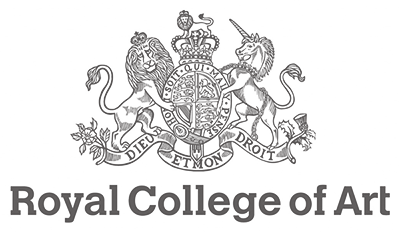
Lecture
Antonino Cardillo
The Off Club in Rome is a restaurant bar built over the past two years. In this conference I will discuss the process that led to its realisation. This project is about how the Psyche is involved in the body of architecture. My speech will therefore be divided into three parts: Vision, Construction, Identification. To realise a conscious architectural project, it is my custom to personally develop the entire creative process, which from the project leads to the representation through the construction of the work. This mode of operation leads to a different result. The Off Club project, therefore, transcends the ordinary function of the restaurant bar and tells my point of view on the world.
The intuitive function: From the psychical subject to the physical object
According to Carl Gustav Jung,[1] the Psyche could be divided into four primary functions: Thought, Feeling, Sensation, Intuition. The intuitive function projects the contents of the Psyche onto objects. Objects, animated by these contents, ‘populate’ a reality. Thus, astral bodies, geographies, plants and animals become deities and mysterious presences of the collective imagination. According to this reading, even the visualisation of an architectural project could be an attempt produced by the Psyche to project its contents into space, condensing into a sensitive reality.
Starting to design the Off Club, I encountered a certain fear. I had never designed a restaurant bar, but one aspect was clear to me: I did not want to design a trendy bar with luxury furniture. I wanted to tell you something. So, I tried to imagine a restaurant bar in the form of a church. Perhaps it might seem inappropriate to transfer religious content into a commercial typology, however, again according to Jung, religious content comes from the collective unconscious of our Psyche. They appear to us as different fragments, often conflicting, but they belong to it. The intuitive function possesses this ability to let these visions emerge. Unfold the mysterious contents of the unconscious on the ideal plane of the sacred. Thus, such contents appear as reflections of it on physical reality.
Today, food addiction seems to have become an endemic disease. So, at the beginning of the design I asked myself: what happens if I graft subliminal contents pertaining to the sacred into a consumption space? Is it possible to unconsciously stimulate the consumer’s inner world through the experience of architecture? So I came to a vision of space in the form of a computer generated image (CGI). What to see in this image? A screen, a light that comes from behind the screen and a sense of eroticism borrowed from phallic forms dug on its surface. What does this screen tell us? Maybe you can cross.
Despite everything, even today, the wall remains the main subject of the discipline of architecture and the ‘veil’ invites the discovery of its body. The background content is veiled like the iconostasis of a Byzantine church. It is protected and requires devotion on an equal footing. Through this screen, a sense of eroticism is reunited with the sacred. According to psychological, archeological and anthropological literature, eroticism and sacred are linked to each other. When I presented this image to the clients, I wanted to establish a feeling of participation with them. The restaurant’s logistical problems were resolved later, because I did not want them to be the main topic of the project. What we were looking for was the emergence of an identity, the face of a place.
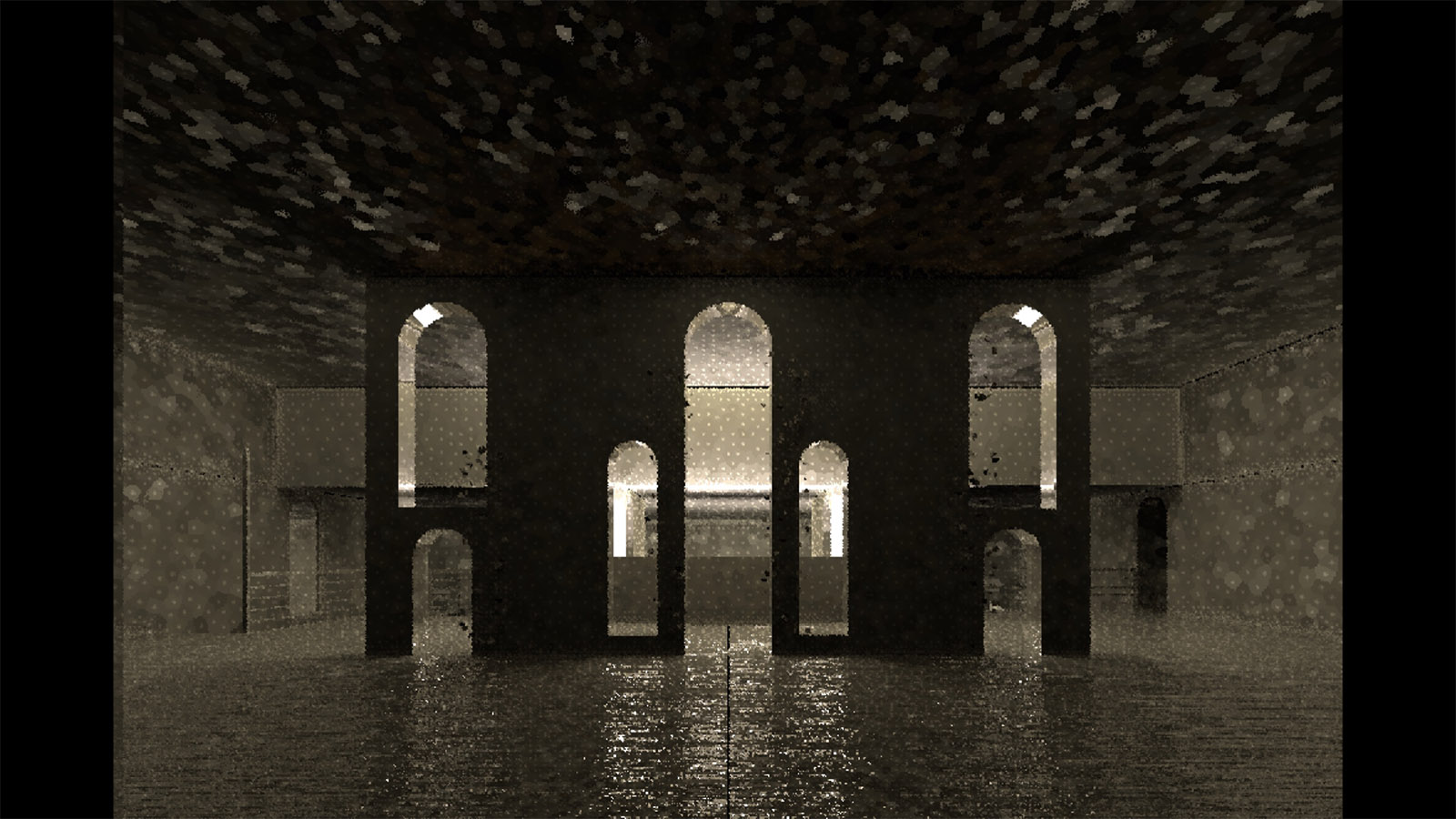
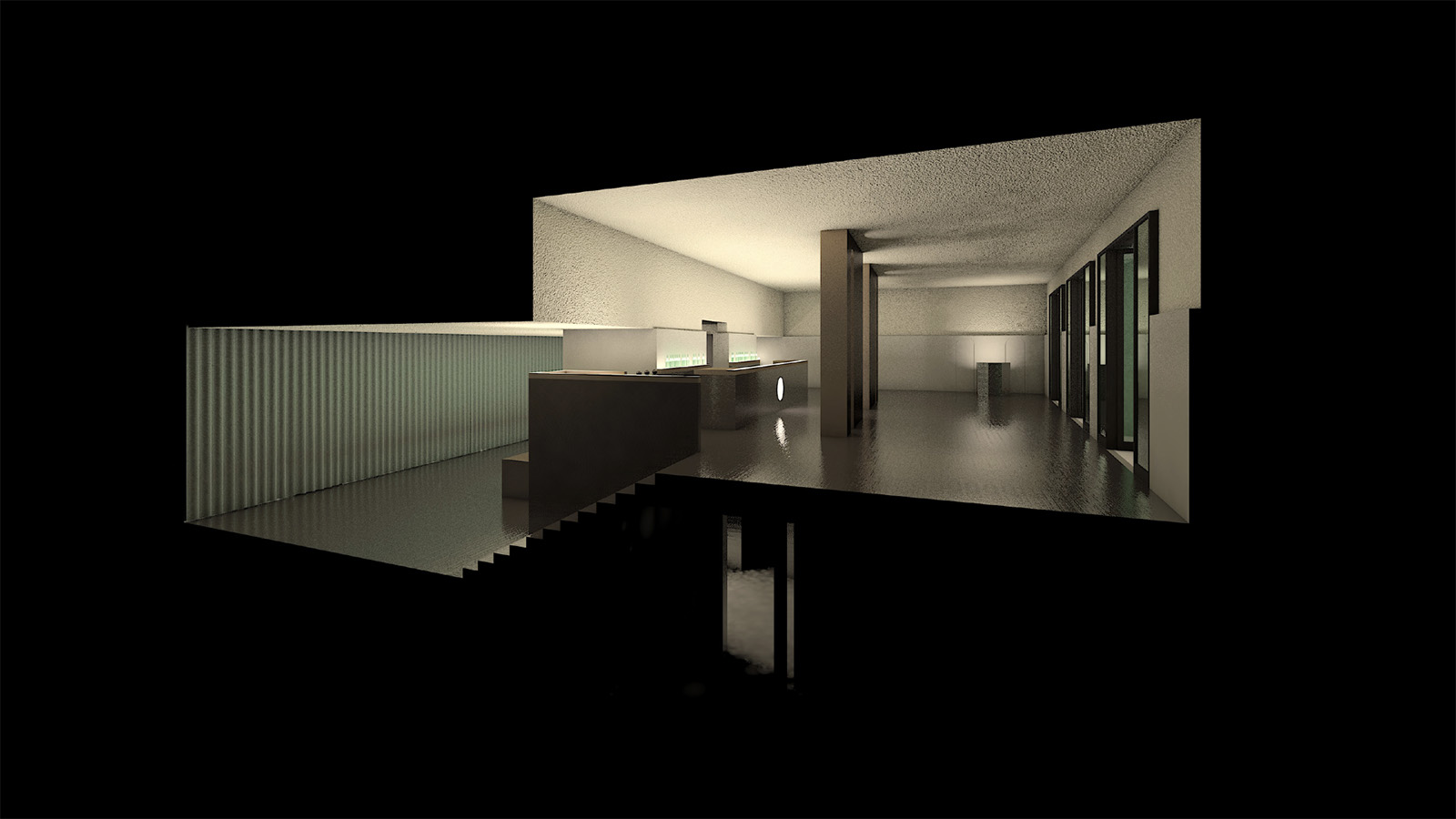
The making of Rome’s Off Club: Projection
Language as the “House of Being”: Toward an etymology of architectural words
This second part of the speech is titled with a quote from Martin Heidegger.[2] Some of the words of the discipline of architecture are the arch, the door, the wall and the fence. They ask us to be understood. The use in an architectural construct of each word requires knowledge of their etymology. Often the historicity of the words is unknown and the clichés confuse their meaning. So we try to say something but we find ourselves having said something else.
The caesura imposed by the modern avant-gardes led to a loss of the original etymon of the words-content. But often even a lot of postmodern architecture has trivialised the historicity that builds language, proposing a fetishistic use of vocabularies from the past. Confusing the historicity of senses and meanings of words, much postmodern architecture has so been lost in distraction and entertainment. While, what I wanted to develop through this project, was a return to a more responsible use of the words of the past. An arch, for example, has a sacral function because it is the anthropomorphic representation of the phallus. According to Jung, the phallus represents the ‘future’,[3] that idea-possibility of projecting-designing into the future. Thus, the arc in architecture is a powerful cultural, anthropological and psychological sign, which demands respect and devotion.
Jung’s reading on the representation of primordial images or archetypes, explains that these figures have inhabited our Psyche since time immemorial and that therefore recur in different civilisations. They are not the product of a single civilisation, but the result of millions of years of experience embedded in our genes. They are those endless references to which it alludes once a rustic vault and its gilding.
Today, gold is associated with jewellery and material wealth, but in the past it had another meaning. According to Jung, the alchemical process of the philosopher’s stone that led to gold was the unconscious projection of an instance of spiritual and therefore psychological transformation.[4] Gold in churches is a recurrent. Churches do not just talk about Christian divinity. Churches possess this power to make the Psyche a sensitive reality. We are therefore creating spaces to give voice to psychological content. And the cosmology of a golden vault is already present in our Psyche.
After the acquisitions of the Depth Psychology we can therefore reread and reinterpret the phenomenology of the sacred in a different way. This content is not exclusively about religion, but comes from the Psyche trying to project its hidden content into an external sensitive space.
A certain dissonance between grey-stone and gilding, also seen in the Byzantine sacred spaces of Rome, is reflected here in the Off Club project. The incidence of light gives different brightness values between the two colour ranges, distinguishing the two fields below and above. This contrast is simple, but in space it becomes powerful because it gives the ceiling a feeling of otherness, of distance, as if it were placed in another reality. Marius Ioan Frunzà, one of the bricklayers who built the project, looking at the newly painted ceiling, exclaimed: “it looks like Heaven.”
Black was the colour of the screen-iconostasis in the initial vision. During the process, I decided to employ a glossy black painting, thus giving the impression that the screen was not a solid object, but a reflection through which to see the subject. And that, after all, was also the main topic of the project. That shape that we first saw covered in white, now appears transformed by the application of colour. Colour is a material, through which, using minimal resources, every single word of architecture can change its meaning.
A recurring element in Byzantine painting is that of a large black void on a golden surface. I do not know the meaning of this recurrence, but I wanted to include it in the project. So, through this pictorial technique I modified the space without changing it in the volumes. An arched silhouette dug into the thickness of the golden ceiling, crowns the rear facade of the miniature-palace. This surface of this was painted glossy black. Reflective, through the references of the perspective you almost have the impression that the space continues beyond the ceiling. As in a theatre, this illusion of seeing another architecture is just a perception of the senses. It continues in the central view from the entrance to the first floor, making it seem as if the ceiling above the banco-bar disappears. I did not want to portray space as it was measured, but I wanted to graft a sense of perceptual ambiguity: the feeling that beyond the window, there was a sky fading into the darkness.
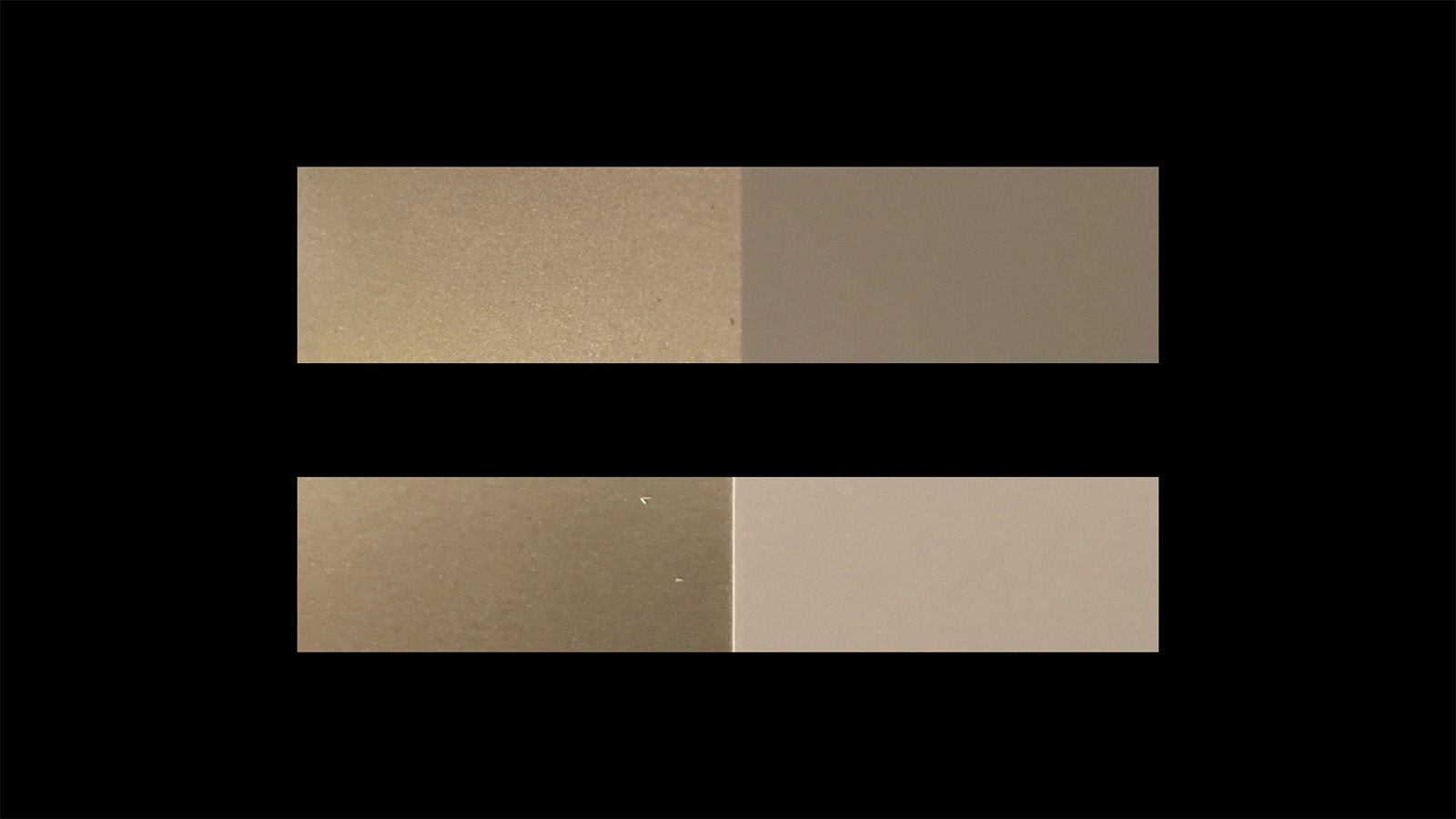
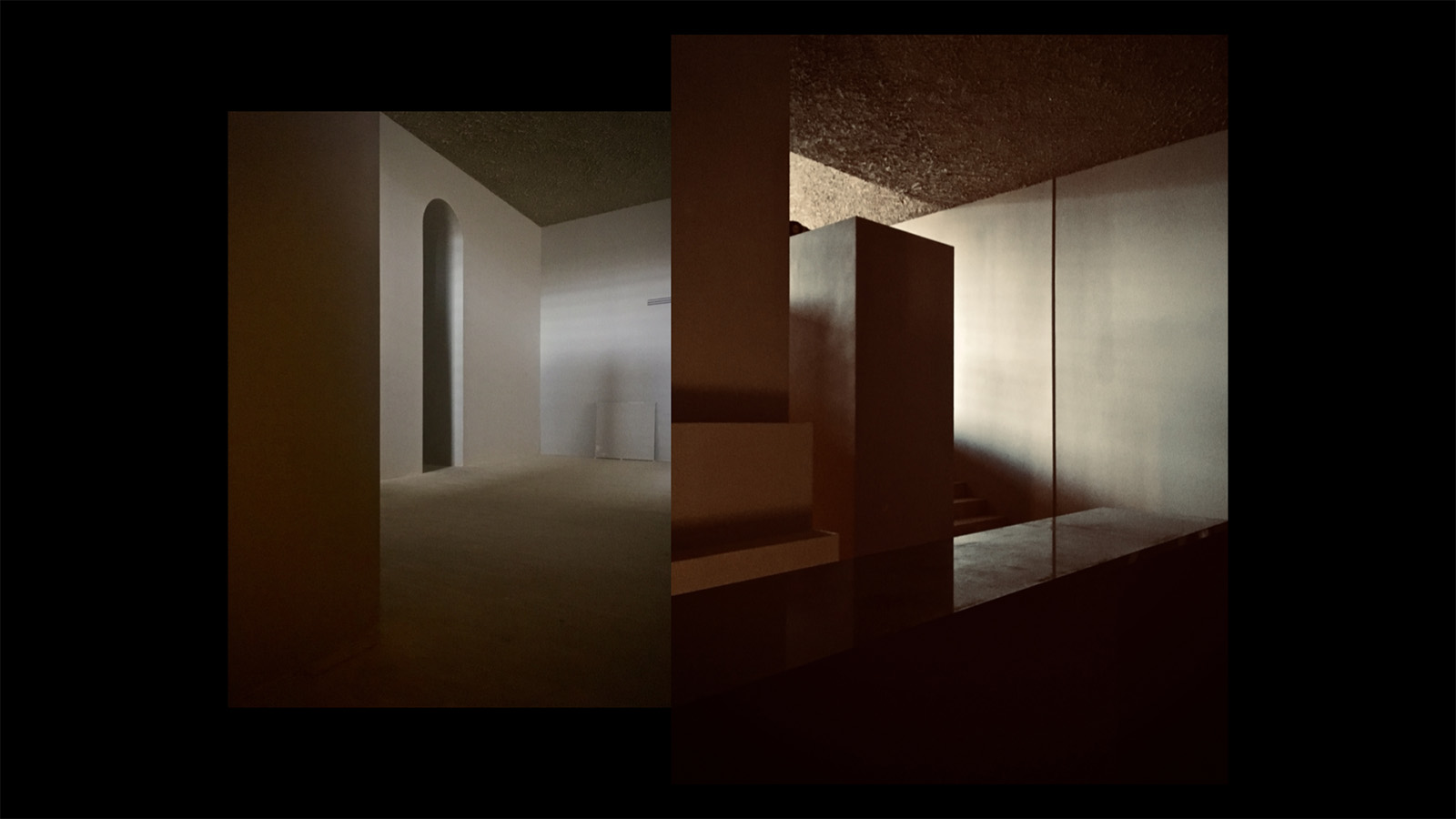
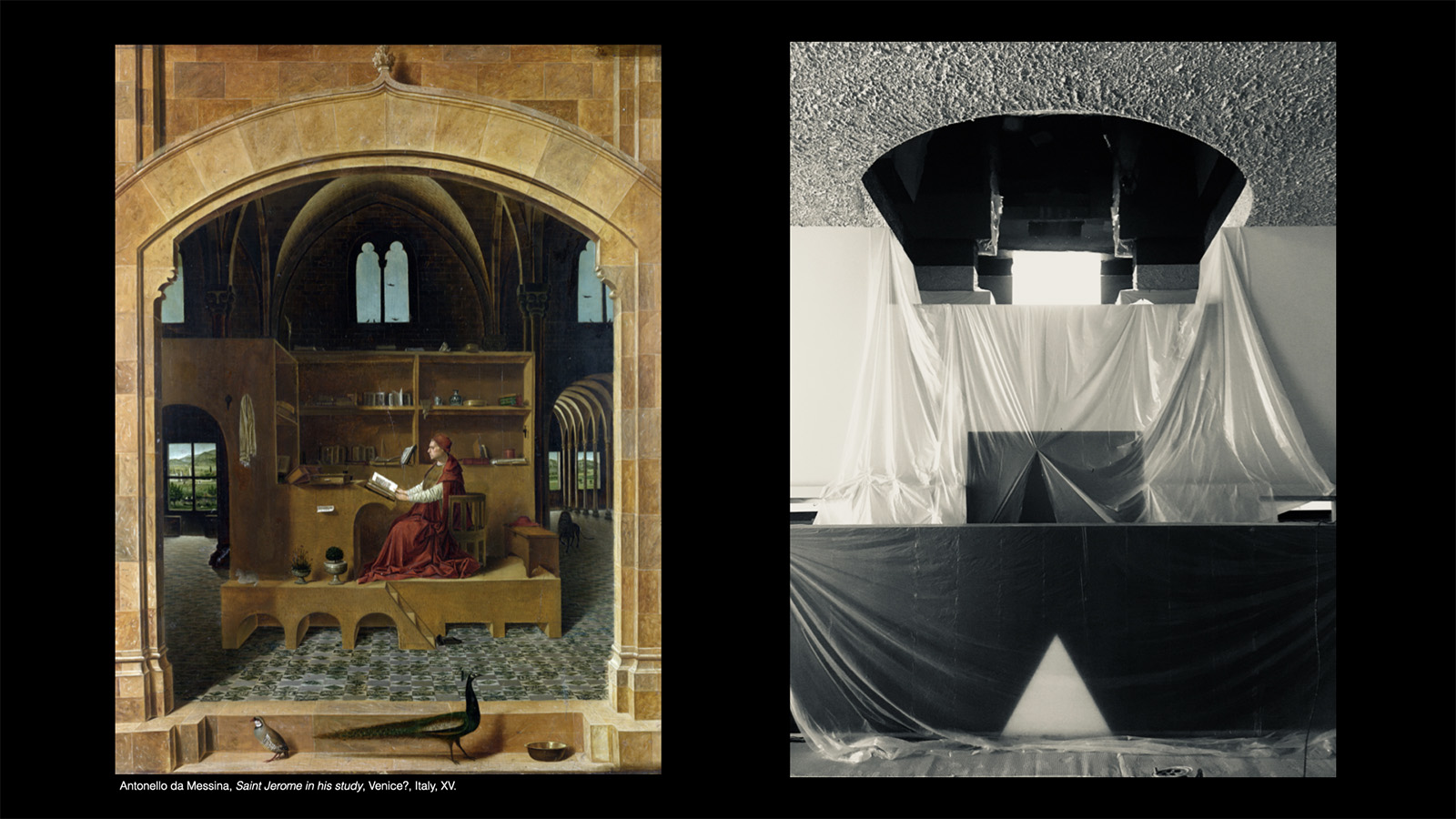
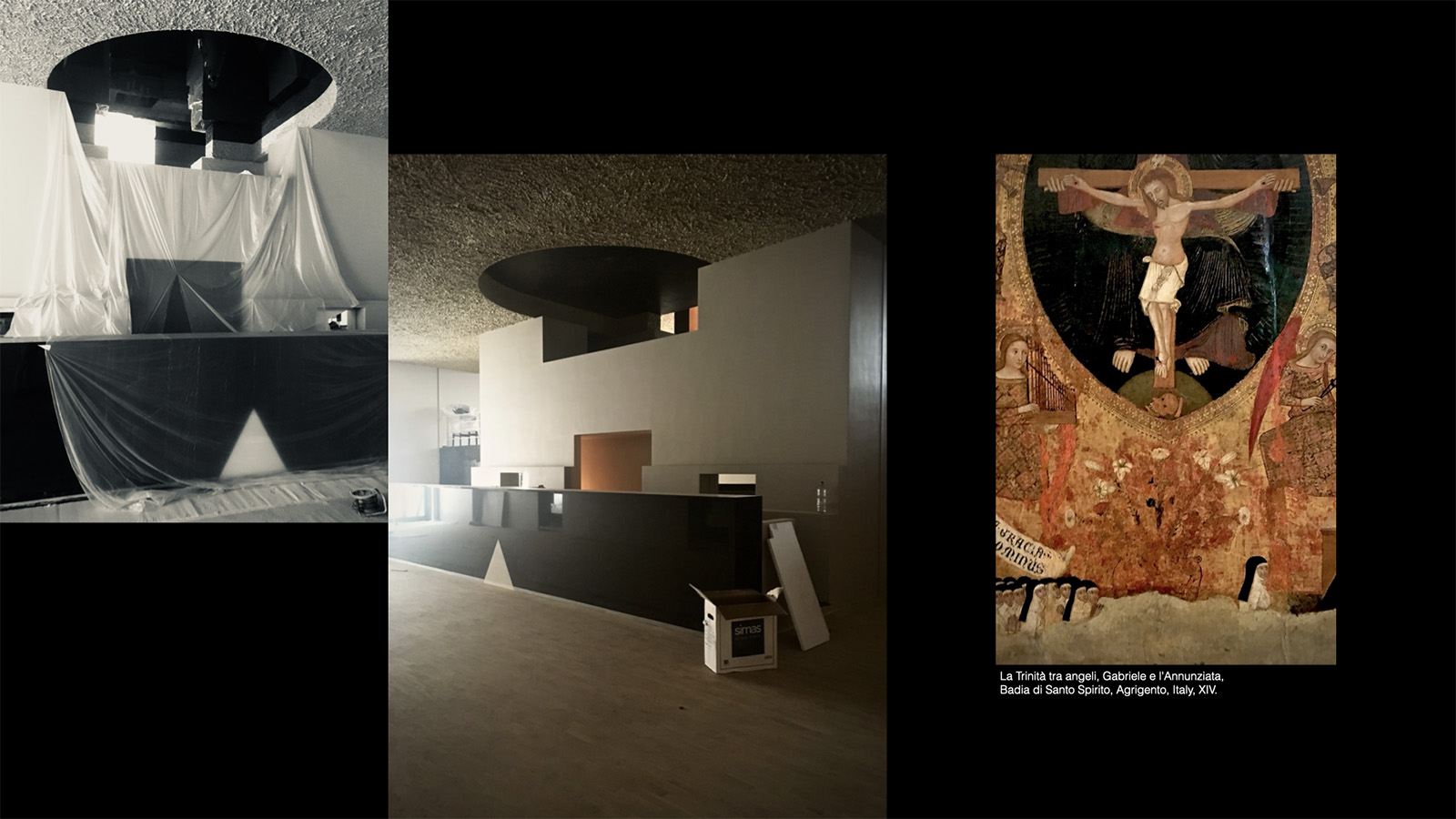
The making of Rome’s Off Club: Language
The afterward detection: The temple in the sacred precinct
The way we represent architecture is part of the architecture discourse. When the idea is separated from its representation, the inner sense of a project is lost. Photographing the Off Club with a mobile device during the construction work, I was, therefore, looking for its possible identification. How should it exist in reality? I am not talking about the reality of the building, but the possibility of its representation, through which to transmit the project to the world.
According to Jung, “archetypes, so far as we can observe and experience them at all, manifest themselves only through their ability to organise images and ideas, and this is always an unconscious process which cannot be detected until afterwards.”[5] Thus, this idea of searching for a final image was also an attempt to identify the primordial image that the project wanted to represent: the image of a mandala of a temple, veiled by a screen, inside a sacred enclosure.
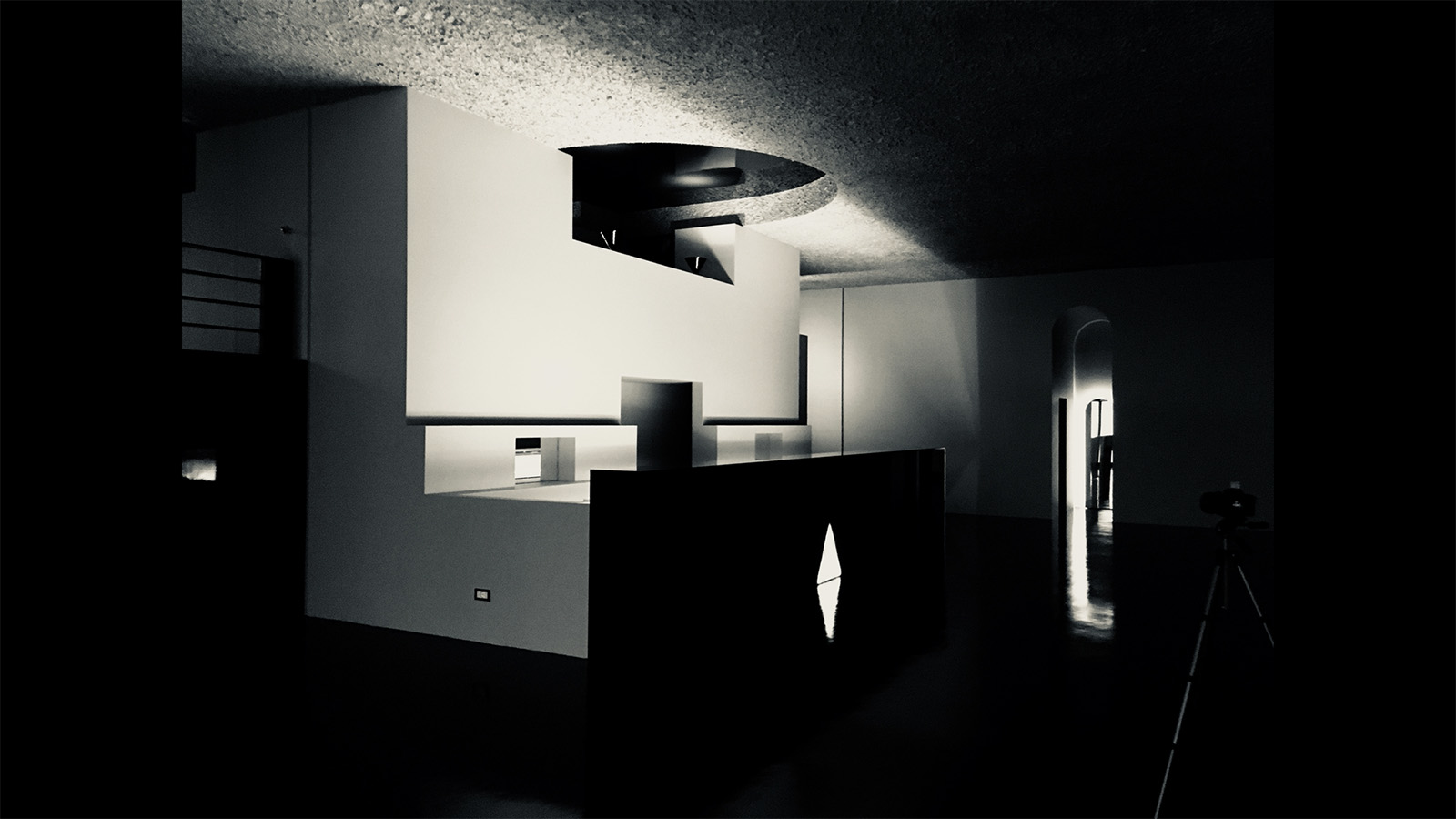
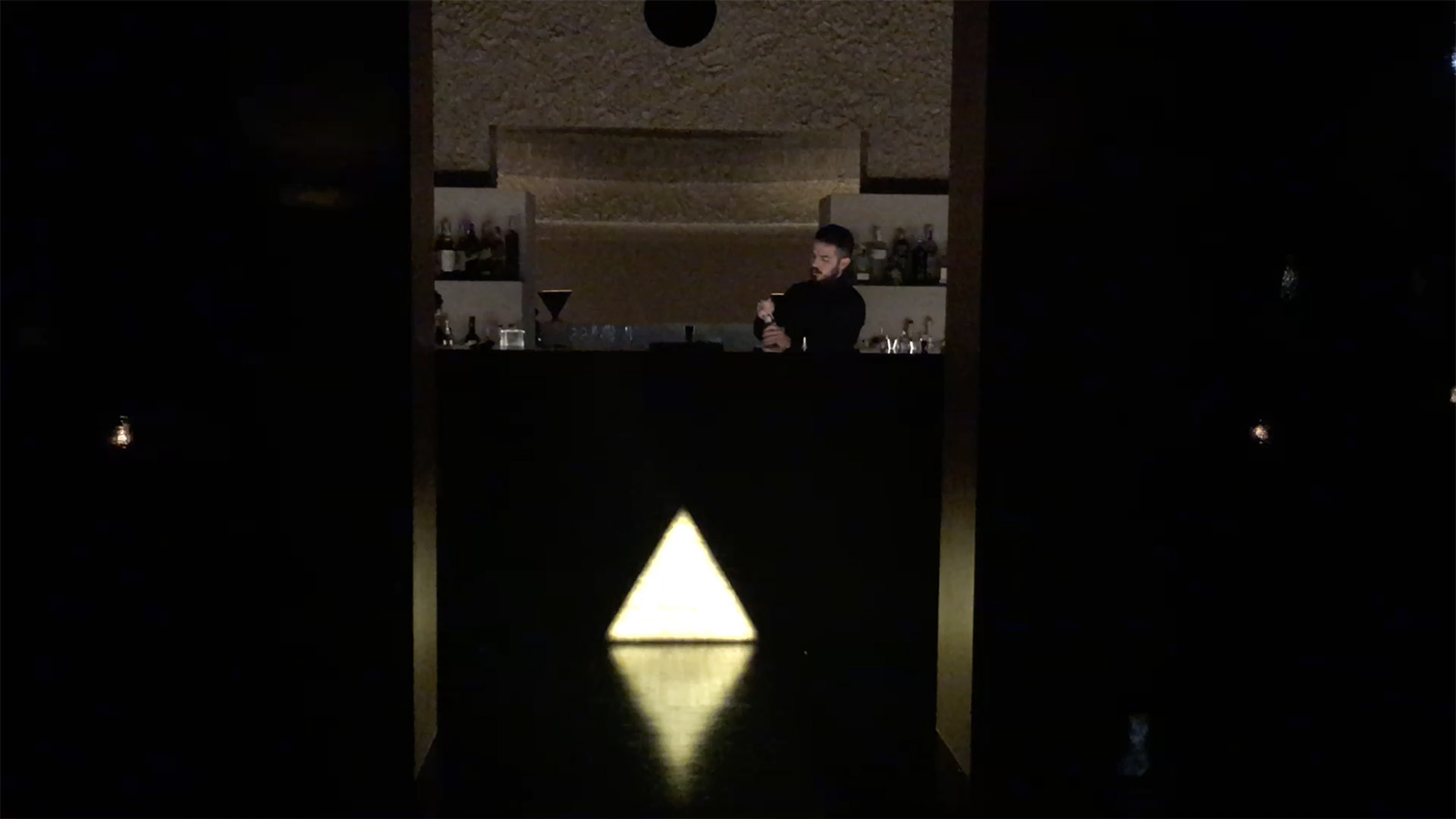
The making of Rome’s Off Club: Representation
Notes
- ^ Carl Gustav Jung, Psychological Types [1921], Collected Works, vol. 8, Routledge, London, 1971, pp. 320-322.
- ^ Martin Heidegger, Über den Humanismus, Klostermann, Frankfurt am Main, 1949; It. ed., Lettera sull’Umanismo, Adelphi, Milan, 1995, p. 31.
- ^ Carl Gustav Jung, The Black Books of C.G. Jung (1913-1932), ed. Sonu Shamdasani, Stiftung der Werke von C.G. Jung & W.W. Norton & Company, 2020, vol. VI, p. 226.
- ^ Carl Gustav Jung, Psychology and Alchemy [1944], Princeton University Press, 1980, p. 26.
- ^ Carl Gustav Jung, ‘On the Nature of the Psyche’ [1947/1954], Collected Works, vol. 8, Princeton University Press, 1969, p. 231.
